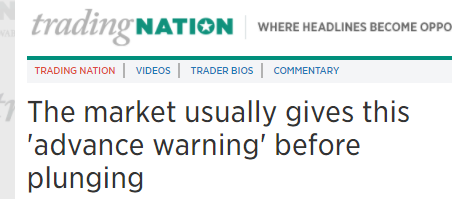"It was a Black Swan event"
The problem with artificially suppressed volatility is that it doesn't give markets a chance to shake out the weak hands and build support levels below the market. As the market climbs asymptotically, gamblers are forced to chase momentum at all price levels, leaving no chance to build a base. On the downside, the avalanche has nothing to stop it.
As reported in Zerohedge and elsewhere, volatility, real, implied or otherwise is at record lows. Featuring among other things the longest stretch without a 3% pullback, in casino history.
And yet, despite this widely known volatility suppression, gamblers assume they are still "owed" the usual advance warning prior to collapse:
"Fear not. The market will likely give you a heads-up before a 10 percent pullback, equity strategist Sam Stovall says"
Over the past 40 years, the S&P 500 posted an average of 67 trading days of high volatility, in which it rises or falls by 1 percent or more, before it tops out and drops at least 10 percent.
"Investors have been both pleased and unnerved by the rising number of new highs that have been accompanied by an absence of volatility," Stovall said. "The market will likely continue to surprise investors in 2017 in a positive way, and may even be kind enough to warn of an impending correction through a ramp-up in daily volatility."
Unfortunately, Wall Street monetized the usual volatility warning by shorting it into oblivion:
Which is why...
ZH: We haven't seen this since 2008:





